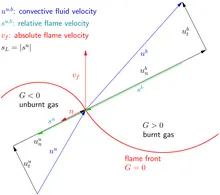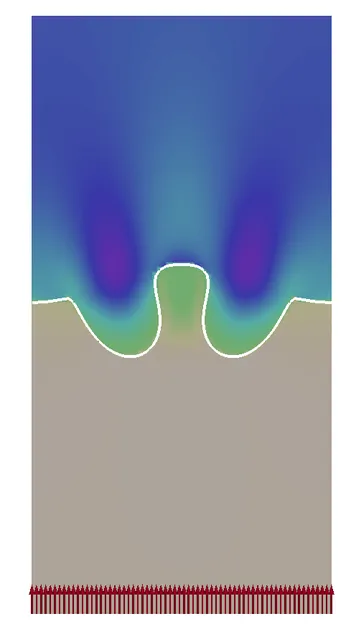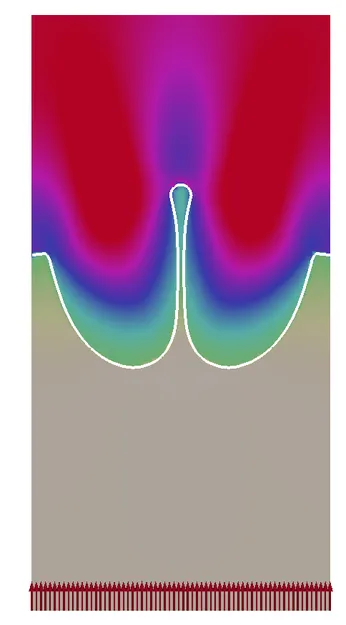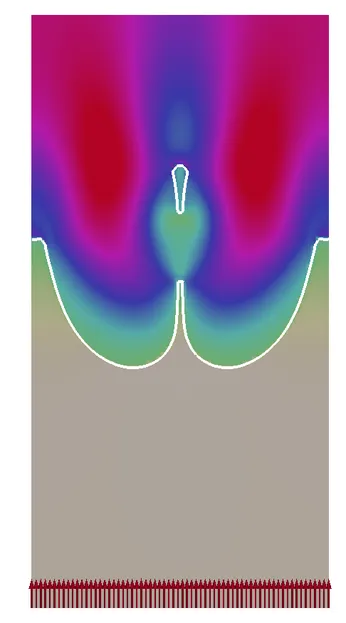Combustion
This application is particularly supported by the Emmy Noether Research Group.
Even in times of declining supplies of fossil fuels, present and future technologies in propulsion and power generation are, and will be, based on turbulent combustion. Premixed, non-premixed and partially-premixed combustion processes each present their own challenges with modeling and numerical simulation. We develop a novel approach to Large Eddy Simulation (LES) of turbulent premixed combustion, based on the eXtended Finite Element Method (XFEM) and multiscale and stabilized finite element methods.
In premixed combustion, a homogeneous mixture of oxidizer and fuel burns in the combustion chamber. Assuming scale separation, the chemical length scales can be considered small compared to the turbulent flow length scales. Thus, the turbulent flame is modeled as an ensemble of thin laminar flamelets which are embedded in a non-reacting turbulent flow field.
Following the G-function approach, a popular modeling approach to turbulent premixed combustion, we use a level-set function to capture the propagating flame front. The level-set field moves with the turbulent flame speed which represents the chemistry.
Our approach does not aim at resolving the large gradients that occur across the flame. It rather considers the thin flame as a gasdynamic discontinuity and takes advantage of the XFEM to reproduce this discontinuity in a sharp fashion. Eventually, the flame front is represented by a moving interface embedded in a fixed computational grid. Appropriate jump conditions have to be enforced at the interface. They are incorporated into our computational method via additional terms based on Nitsche's method.




